New perk! Get after it with local recommendations just for you. Discover nearby events, routes out your door, and hidden gems when you sign up for the Local Running Drop.
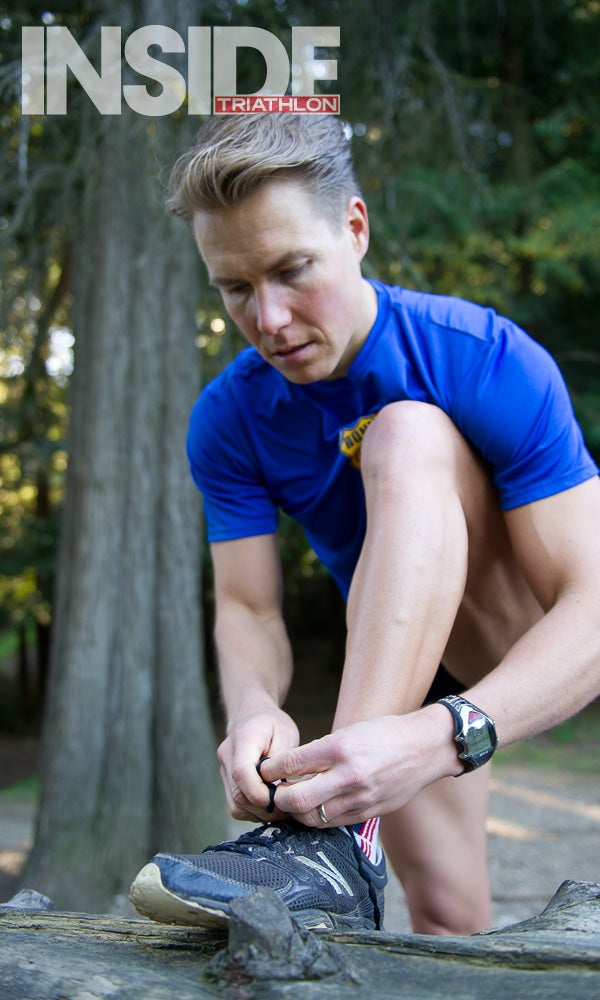
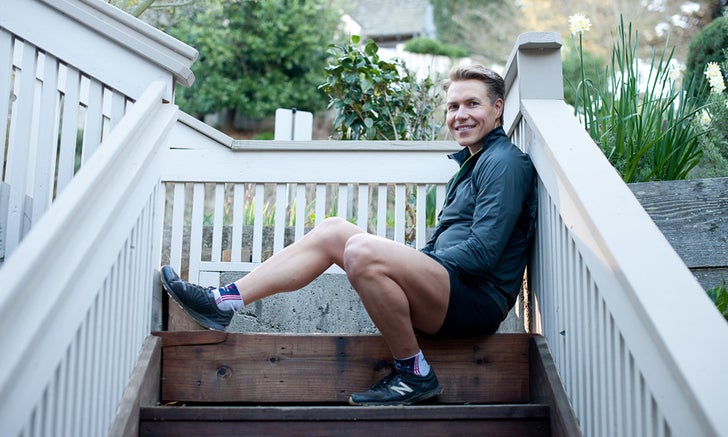
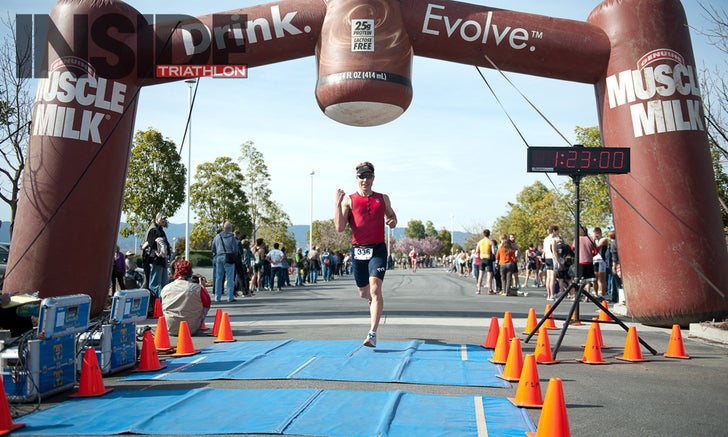
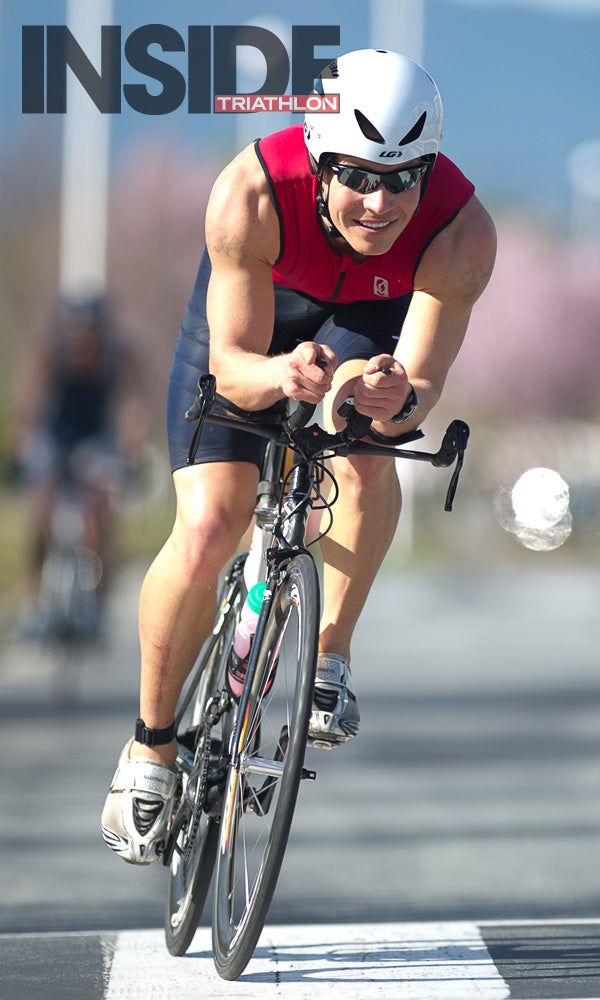
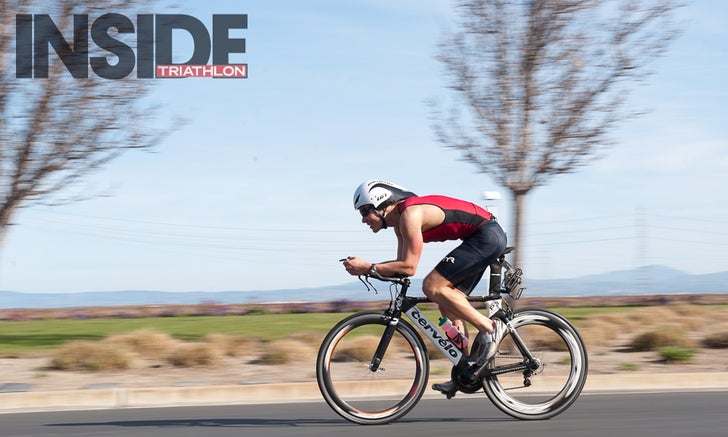
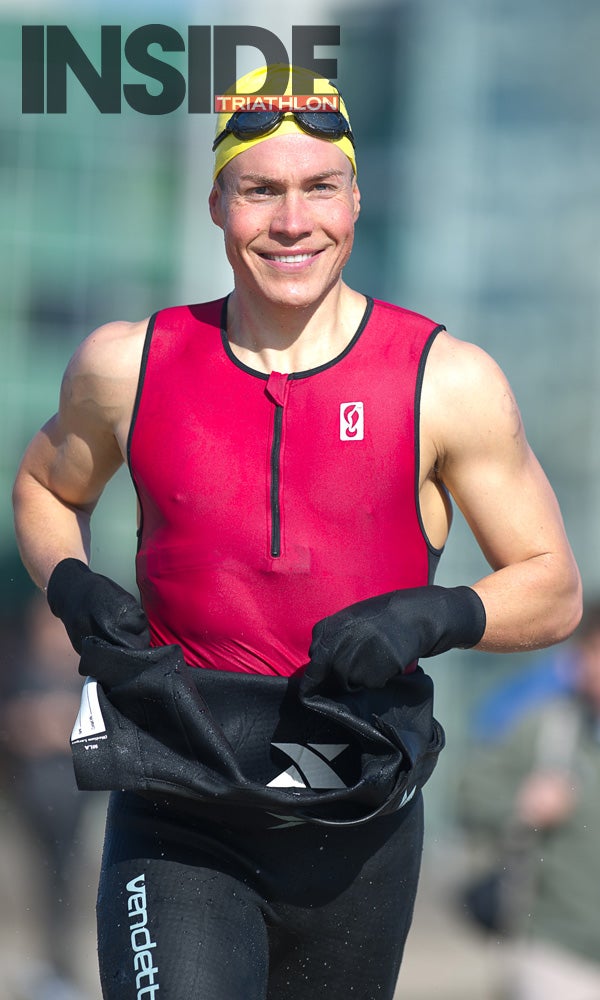
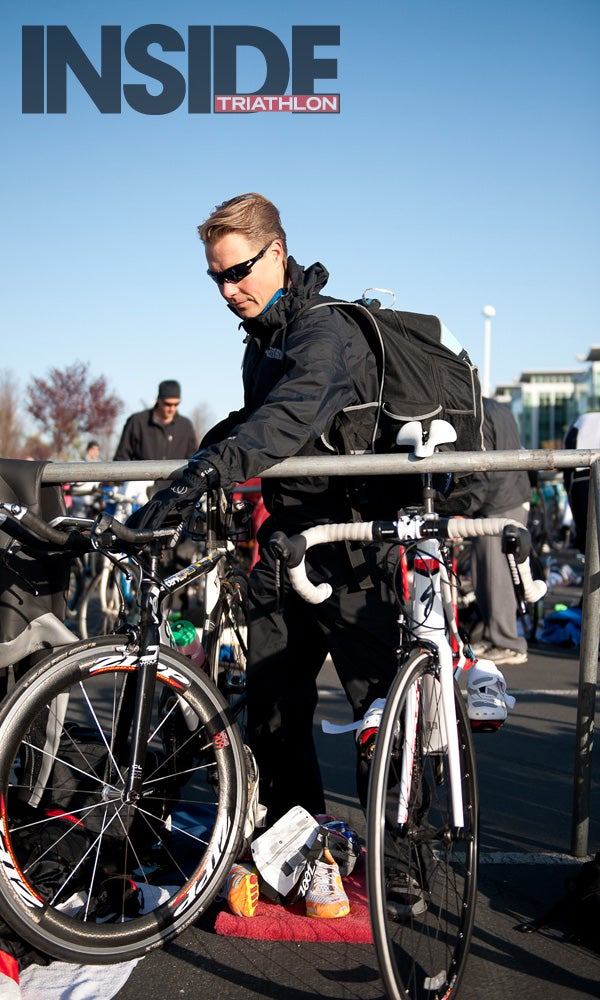
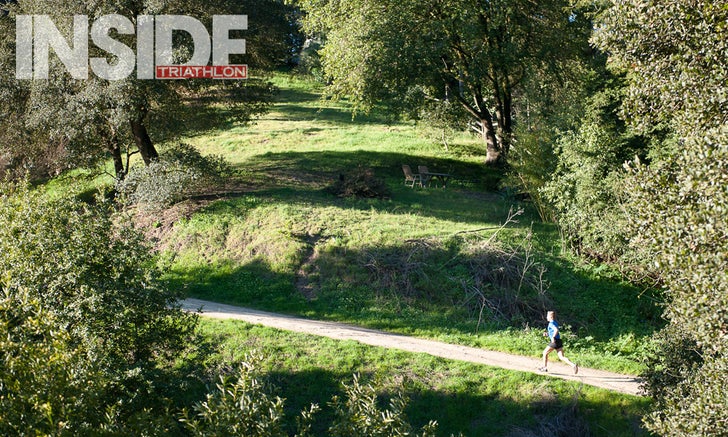
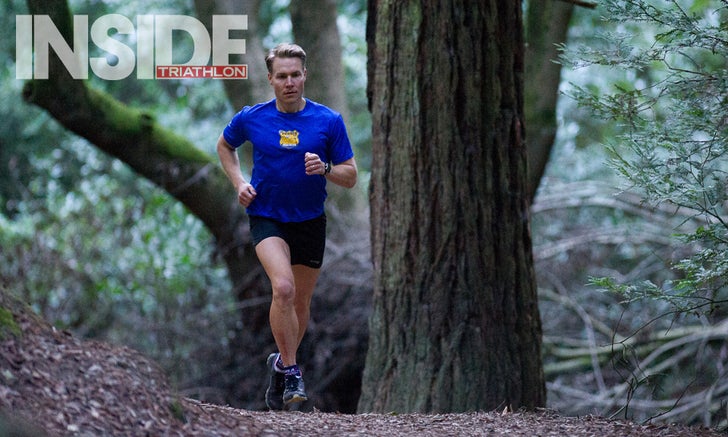
How serial entrepreneur Sami Inkinen went under nine hours in Kona on 12 hours of training per week.
This article originally appeared in the May/June 2012 issue of Inside Triathlon magazine.
We’ve been running for about an hour on the hilly redwood trails near the Bay Area’s Piedmont Pines. We began in the darkness, when the temperature was still cool, but now that the sun has risen the air is baking under the forest’s thick canopy, and my face is slick with sweat. We are running at a pace that is so fast, I tell myself to think of the workout as a race.
When I started the run, I wasn’t expecting to be moving so swiftly, as my running partner, Sami Inkinen, 36, a Finnish age-group triathlete and serial entrepreneur, has only had 10 days to recover from an 8:58:59 performance at the Ironman World Championship in Kailua-Kona, Hawaii. I figured that his fatigue from this spectacular effort—he was second in the fiercely competitive 35-39 age group—combined with my status as a former collegiate and still decent runner, would produce a pace that I could stick with.
But I couldn’t have been more wrong, and I can’t hang anymore; the backside of Inkinen shrinks like a jet plane sailing toward the horizon. I reach a fork in the trail and have no idea which path to take, but I’m so tired I don’t really care. I stop and wait for Inkinen to come back for me, as he promised he would after he finished his 5 x 2-minute mini-fartlek at Ironman race pace.
When he returns, he’s grinning from ear to ear, and he later tells me that his runs in the forest, just steps away from the house he shares with his wife in Oakland, serve as his “meditation.”
“I put this branch here for you to signal to take this path, but I guess it wasn’t clear,” said a laughing Inkinen, who, at a muscular 183 pounds, is built more like a Clydesdale than an elite triathlete.
I first decided to profile Inkinen because I had heard that while his busy work life only allowed him 12 hours per week to train, he was still producing the types of results you typically see from age groupers who treat triathlon more like a job than a hobby. When I went running with Inkinen last October, he was president of San Francisco-based real estate search company Trulia Inc., a rapidly growing company Inkinen founded with Pete Flint and that is funded by venture capital giants such as Sequoia Capital. In March, Inkinen announced that he would be stepping away from his day-to-day duties at Trulia to pursue other interests while still remaining an active board member.
Amid this hectic work schedule last year, Inkinen became the overall amateur champion at the Wildflower Long Course Triathlon, the overall amateur champion at Ironman 70.3 Hawaii, the 35-39 age group world champion at the Ironman World Championship 70.3 in Las Vegas, and placed second in his age group in Kona, a race he has qualified for every year since 2007, the year he got serious about triathlon.
How was it possible that he could conjure up such phenomenal results with so little training?
Over the course of the previous day, he had laid out his training philosophy for me—one influenced by Purplepatch Fitness coaching guru Matt Dixon and filled with lots of intensity, maniacal attention to detail and number crunching, and a fanatical insistence on recovery.
And while his philosophies were intriguing and could no doubt help any age-group triathlete—and perhaps even solve the problems of chronic fatigue, injury and general unhealthiness among front-of-the-pack age groupers—after witnessing Inkinen’s monster engine firsthand on our trail run, I had the answer to my question.
The answer was yes, it is possible to go under nine hours in one of the toughest Ironmans on Earth, beating 23 pros in the process, off of 12 hours of training per week—if you are blessed with the genetics of Sami Inkinen.
***
It’s a bit simplistic to finger talent alone as the reason for Inkinen’s success as an age-group triathlete despite his demanding work life.
While always talented, Inkinen had never experienced the kinds of results he saw in 2011. Prior to last year, he hadn’t placed higher than 11th at Kona in his age group, and he blew up there in 2010, finishing 95th in his age group.
So what changed?
In the words of Inkinen, it’s been his newfound focus on recovery.
“What I’ve been super-conscious about this year is this idea that if I don’t improve in almost every single workout, it’s not because I haven’t trained, but because I haven’t rested,” he told me over dinner the night before our run in the forest. “Literally, that’s been my thinking.”
In other words, he rejects the notion that you have to train through months of hard, exhausting workouts to improve.
Instead, he followed the principle that he should literally get stronger and faster every week, if not every day, and that his numbers should improve during every intense workout.
To help him reach this goal, in early 2011 he began tracking his recovery with a program called Restwise, which Dixon suggested, as it keeps tabs on your daily resting heart rate, body mass, sleep, oxygen saturation, hydration, appetite, muscle soreness, energy level, mood state, well-being and the previous day’s performance.
Using these markers, Inkinen was better able to evaluate whether his body was ready for hard stimulus. If it wasn’t, he would give himself at least another easy day before he attempted an intense workout.
“It’s very eye-opening,” said Inkinen, who uses Dixon as a sounding board but prefers to create his training schedule himself, as he enjoys the process and puzzle. “It sort of forces you to be like, ‘Actually, I’m waking up this morning and my mood is not what it used to be. I’m a little grumpy. I’m not feeling right.’ And you see the numbers and you’re recovered 60 percent when it used to be 90. It’s like, ‘I think I’m not going to do this interval workout.’”
Dixon says that his athletes rely on Restwise as a tool, not a mandate.
“Sami doesn’t use it and say, ‘If I have a low score I don’t train,’” said Dixon, who has been working with Inkinen since 2008. “But really what it is is a conversation starter, an ability for any athlete to check in with themselves, spend two minutes thinking, ‘How do I actually feel today?’ and looking at their score to say, ‘Am I really recovered, and would I benefit from doing this workout?’”
Keeping track of recovery markers can be especially helpful for age-group triathletes like Inkinen—people who lead stressful lives but who often forget that stress is stress, whether it’s from an 11-hour flight, an intense board meeting or a hard hill workout.
“There are two types of stress: training stress and non-training stress,” Dixon said. “For a professional athlete, one of my 15 pros who I work with, they need to absolutely maximize training load while maintaining positive adaptations—so their physical performance is their limiter. For everyone else, they have to maximize their training load and integrate it within this massive, busy, non-training stress thing called life.”
The Restwise data analysis dovetailed nicely with the triathlon-related number crunching Inkinen had already been doing since 2004, when he first began keeping a triathlon workout log of sorts on an Excel spreadsheet. Back then, Inkinen was working toward his MBA at Stanford University, and some of his classmates had convinced him to attempt the Wildflower Long Course Triathlon even though he could barely swim.
Today, Inkinen still uses this very same spreadsheet, logging data points such as how he feels, how many hours he slept, his morning heart rate, his weight, his caffeine intake, his caloric intake, and any workouts he has done and how they went. The spreadsheet also serves as a diary of sorts, and Inkinen says each day he writes down three things he’s been grateful for in the previous 24 hours.
“Partially it’s my diary as well. So, mainly it’s around the workouts, but it’s also stuff like, ‘I got married today,’ kind of thing,” Inkinen said, laughing.
This focus on recovery is, in a sense, a focus on specificity—or the tenet that every workout should have a purpose, and that you shouldn’t start a workout unless your body is ready to achieve that purpose.
When Inkinen first began working with Dixon, he was doing a lot of workouts at a steady, mediocre pace and little intensity—he was exercising more than he was working out and getting by at races on genetics alone.
What Dixon brought to the table was intensity and specificity, Inkinen says.
“Sami’s genetically gifted, but he happens to be an athlete who responds really, really well to intensity,” Dixon said. “We did more intensity, but it wasn’t just blind intensity; it was also very specific. What I did was not just add intensity, but I added specificity to his training.”
Instead of going out and riding around aimlessly for a few hours, Inkinen might do a workout on the trainer where he warms up for 20 minutes and then does 4 x 8 minutes or 5 x 8 minutes (depending on how he feels) where the eight minutes are broken up into two minutes at half-Ironman race pace, two minutes just above half-Ironman race pace, two minutes at, and then two minutes above, followed by a five-minute jog for a cool-down.
When Inkinen gets into the weeks leading up to an Ironman, he might do a workout where he warms up for 30 minutes and then rides for 20 minutes just under Ironman intensity, then 20 minutes just at Ironman intensity, and then 20 minutes just above Ironman intensity. (See chart on page 36 for a typical training week for Inkinen.)
Inkinen will tell you that he doesn’t like to train to the point of exhaustion and instead finishes every ride or run with good form. He believes that training to exhaustion requires too much recovery, and he likes to be able to start another intense workout within 24 hours.
***
While Inkinen’s focus on specificity and recovery in training was important to his success in 2011, there was another part of the triathlon puzzle that Inkinen knew he would have to solve if he were to ever really knock it out of the park at Kona or Vegas.
That other part was heat—as a bulkier athlete, Inkinen would always be at a disadvantage in hot weather compared to skinny runner-types, who are able to get rid of excess heat more easily.
“Just physiologically, at 185, 183, or whatever, at that weight, you generate so much more heat than a 160-pound athlete,” Inkinen said.
Inkinen approached the heat problem like he would any problem, including one in business. First, he talked to world-class experts, then he read as much as possible, and finally he tested what he had learned on himself and adjusted, just as a scientist would.
Through this process, he discovered that pace control was the key to performing well in the heat—and in Hawaii.
“Ali’i Drive is ridiculously hot for someone like me. I could go out in 6:45 miles, but if I run 45 minutes at that pace in that heat and there’s no wind, I’m totally toast,” Inkinen said. “I’ve tried it once and it’s done. So the pace control is the No. 1 thing.”
In other words, when Inkinen reaches a particularly hot section of the course in Kona or in any race, he holds back a bit. When he gets to a cooler section, he pushes the pace a bit. In fact, he won the overall age-group race at the 2011 Hawaii 70.3 by pushing the pace a little too much on the bike in the morning, when the air was cool, and then walking up the run course’s short golf course hills, which were naked to the scorching sun.
“Anything that was exposed and sunny and uphill, I just walked,” Inkinen said. “And it’s kind of funny because people were like, ‘You can do it! Keep running! You can do it!’ And I’m like, ‘No, actually, I’m not. I’m just going to walk.’ And I won the whole thing.”
He used a similar approach to win the age-group world title in Las Vegas.
Inkinen also manages the heat through hydration, insisting that he drink enough on the bike so he hasn’t lost any weight by the time he starts the run.
“I always take as many water bottles as I can at every single aid station. I know how much I need to hydrate,” Inkinen said. “I start from the first aid station onward. So it’s not like I wait until I feel hot.”
When he’s riding up a steep hill, he pours water over his white arm coolers, and when he’s running, he periodically fills the arm coolers with ice.
“Some of the scientists say that you shouldn’t put ice on your skin because it actually reduces the blood circulation on your skin. I know scientifically what is right, but anecdotally and experimentally, it seems to help me,” Inkinen said.
Inkinen’s scientific approach extends beyond heat training, as he uses his massive Excel spreadsheet—the one where he’s been noting daily workouts and recovery markers since 2004—to analyze any speed bumps he’s run into during his training.
“There was one year where I used to get sick a lot,” he said. “I could go back and totally see the pattern—I wasn’t sleeping enough. I felt I wasn’t training a lot, but in fact I was training very hard in a sense that I may have taken a red eye to New York and then said, ‘I’m going to do 45 minutes on the treadmill and do 5 x 5-minute intervals, and then the next day I’m going to do a 60-minute indoor spin class and go all-out all 60 minutes.’ And then, come Friday I’m sick. Why did I get sick? You can go look back, and you can see the pattern.”
If you know Inkinen, you wouldn’t be surprised by his passion for solving problems through science or his meticulously kept Excel spreadsheet, as the man is a professed data geek and scientist at heart.
He grew up in a small Finnish town near the Russian border in a home that was run a little like a farm, with its chickens and guinea pigs. His mother oversaw a cafeteria at a paper factory and his dad was an electrician, and Inkinen didn’t really have a concept of how you could live your life any other way. Nevertheless, as a gifted student in math and the sciences, Inkinen knew he could leverage those talents, which is why he chose the Helsinki University of Technology for college. While there, he earned his master’s degree in engineering, applied math and business strategy through the physics department.
He also developed an obsession with tracking data in school, and since then he has tracked everything from employee happiness, to how he spends his time while working (he used to waste too much time on meetings), to how much glucose his body can absorb (he accomplished this with the help of a blood glucose monitor for diabetics that he purchased at Walgreens).
“It’s not normal,” said Ken Shuman, Trulia’s head of communications, with a laugh. “We always joke that he’s a robot and that if you were to open him up, he’d bleed blue and not red. He’s a scientist at heart. At the end of the day he’s a physicist, and his brain works as in, ‘If you track it, you can improve it.’ So whether it’s happiness at the office, the amount of pushups you’re doing, or how much time you’re spending on e-mail versus the phone versus in meetings, if there’s a way to track it, he does.”
Meticulously tracking all this data requires discipline, something Inkinen is in no short supply of.
“I used to work three hours every night from 9 to midnight, and I wasn’t sleeping enough. I’ve kind of tried to cut that out,” Inkinen said dryly over dinner.
While he was still working as president of Trulia, he would wake up around 5:30 a.m., work for about an hour, get in his workout, travel to the office from his home in Oakland on public transportation, which allowed him to work en route, arrive about 9 and leave around 6 or 7. On Sundays he would work from 5 p.m. until 10 p.m.
“I think he’s just able to stay very disciplined,” said Peter Lee, a friend of Inkinen’s and a Stanford Business School classmate. “I think for us mere mortals, there’s always that lazy Sunday, and that’s just not him.”
This disciplined approach has helped him and his business partner, Pete Flint, build up Trulia from an idea on how to solve the “massive consumer problem” people were having when trying to search for a home to a company that is growing rapidly, employs more than 300 people and has raised $33 million in venture capital funding. (Inkinen declined to disclose the company’s revenue numbers.)
Trulia is the second company he has built from scratch. In 2002, before he came to the U.S. to study at Stanford, he sold the company Matchem Ltd., which employed about 20 people, for an undisclosed sum. It was a software company he founded with Finnish physicist Juha Huttunen and which gave TV shows the ability to display interactive graphics.
***
Given that Inkinen is a successful entrepreneur who is regularly quoted in the press, a Stanford graduate and an elite age-group triathlete, most people would likely give him the benefit of the doubt if he were a bit cocky.
But if you walked into Trulia’s corporate office while he was still working there every day, it would become very clear that Inkinen is a humble man—he didn’t even have a private office and instead worked at a desk on the open floor.
“I can’t imagine going into a company where you would have a hallway with thick doors and nameplates,” said Inkinen, who used an empty meeting room at Trulia’s corporate office if he needed to be alone for some reason. “The whole idea is freaking me out.”
He says that Trulia’s policy of no corner offices for any executive is one that allows the best ideas to win, no matter who voices them.
“It’s all about open culture,” Inkinen said. “So what we wanted to create was open communication, an open flow of information and most importantly this feeling of no hierarchy, no bureaucracy, openness, and a level playing field of ideas as opposed to hierarchy that dictates whose idea wins.”
Inkinen is a man who could easily be described as brilliant (in fact, Trulia employees, Stanford classmates and friends who were interviewed for this story used words such as “freakishly intelligent” when talking about Inkinen). He has co-founded two successful companies, speaks five languages, has advanced degrees from two of the world’s best universities, and he literally taught himself how to swim by watching video and seeking out open-water experts, working his way toward a 1:02:18 swim split at Kona this year.
He could have easily walked around Trulia as if he were the smartest person there, ordering employees to follow the bidding of their intellectual superior, and yet he chose not to do this, his employees said.
“He doesn’t micromanage you,” said Rob Cross, Trulia’s senior director of business development. “He’s supportive and there if you need him, but otherwise he’s more than happy to let you take the lead and drive the situation and make the decisions for the things you’re working on.”
Inkinen summed up this philosophy in one sentence: “It’s very easy to try to act like the smartest person in the room, which you shouldn’t do as a manager.”
At Trulia, Inkinen and partner Flint run the company with the philosophy that “people matter”—they measure employee happiness quarterly and insist that employees have lives outside of work.
“I’ve never worked at a company where I feel like it’s also my baby,” said co-worker Shuman. “Everyone has a sense of ownership around here. You see the company growing, and you see how your individual contributions affect the company.”
The humility that Inkinen demonstrates in business makes its way into his sporting life.
“He comes back from these races—forget Ironman, I mean all the other races that he does throughout the season—and he wins 98 percent of them, and he doesn’t even mention it to anyone,” said Dawn Farrell, who was Inkinen’s personal assistant at Trulia. “He goes, ‘Yeah everybody! I’m back. It’s good to see you! What’s going on? How’s work? How’s everybody?’ And it takes one of us stepping up and putting him on the spot and saying, ‘Sami, you just killed it! Congratulations man.’”
Most Trulia employees would probably never know Inkinen were an athlete if it weren’t for the smattering of medals he hung over his desk at the office.
“He certainly does not wear triathlon on his sleeve, and you really wouldn’t know unless somebody had mentioned it to you,” Cross said.
Inkinen’s wife, Meredith Loring, had no idea how accomplished an athlete he was when they first started dating—that is, until she flew over to Kona in 2008, when Inkinen finished 16th in his age group.
“I didn’t really realize how good of an athlete he was. I was like, ‘Well, everyone calls themselves an athlete. He’s just a wannabe,’” Loring said, laughing and later adding, “But that was the first time that I really got to see him in action, and I realized that he was actually very good.”
Inkinen focuses on the journey rather than the outcome, which may be why he’s so quick to dismiss his results.
“What I really love is the journey—the continued process of improving and trying to figure things out,” Inkinen said. “That’s very engaging and exciting for me. Every time I do a race, I write down three takeaways, learnings and then what I can improve and try to change. That’s just fun to me. That’s very much how I like to work and run my teams.”
Matthew Davie, a friend and fellow triathlete, recalls an incident a few years back at Ironman 70.3 Buffalo Springs Lake in Texas that speaks to this point. The weather was awful during the race, with wind, lightning and rain, and Inkinen “was sick as a dog the night before” with food poisoning, said Davie, who had eaten dinner with Inkinen that night.
Yet Inkinen went on to win his age group, and what struck Davie most about this accomplishment was the smile Inkinen had on his face while doing this.
“I was just going out to this turn, and I could just see him coming in, smiling,” Davie said. “You couldn’t tell he had food poisoning. You couldn’t tell it had poured rain or that there was lightning or that the wind was blowing 40 miles per hour on the bike. He was just out there running, having a good day.”
At the time of this writing, Inkinen said he’s not quite sure what he’ll be spending most of his time on as he breaks away from day-to-day operations at Trulia. But one thing is certain—he won’t be spending more time on triathlon.
“If I wanted to focus more and compete sort of at the professional level, it would require a whole other level of commitment, and it closes a lot of doors in your life,” Inkinen said.
On the off chance that he did decide to take a stab at going pro, he would certainly have the tools to compete with the best.
“He’s one of the most genetically gifted athletes that I’ve ever met, and obviously I’ve worked with a fair amount of pretty good athletes,” coach Dixon said.
But if Inkinen went pro, age groupers everywhere would miss the opportunity to get annihilated, just like I did in the forest, by an athlete who only spends 12 hours per week training.
And we wouldn’t want to miss that, would we?
Sami Inkinen’s Keys to Speed
Strength:Inkinen focuses on functional strength, or strength specific to what is needed in a race, rather than gym strength or strength from weights—which is another big tenet that coach Matt Dixon preaches. To obtain this type of strength, Inkinen will do bike workouts at a low cadence and a high gear, or run up steep hills, which activates the glutes and hamstrings.
Training: Inkinen posted a typical training week on his blog, “Incurable Data Geek.” Here’s what he posted:
Monday: Rest (or 30-min easy swim*)
Tuesday: Bike intervals on trainer (60-90 min)
Wednesday: Run intervals on trails (60-70 min)
Thursday: Bike intervals on trainer (60-90 min)
Friday: Rest day: swim (20-50 min); easy run if time
Saturday: Bike “long” (4 to 5 hours with no intervals; social time with wife, friends)**
Sunday: Run “long” (80 to 90 min with intervals); swim if time
*Inkinen almost always finishes a swim with two to three “super-fast sprints,” even on a rest day. He does at least one intense swim workout per week.
**He did one six-hour ride before Kona last year.
Shorter runs: When Inkinen first started triathlon, he did the requisite 2.5- to three-hour runs that most Ironman athletes practice. But Inkinen only ran one two-hour run in all of 2011 and rarely ran over 80 minutes. “I’m not an exercise scientist, so I’m not going to try to pretend that I know exactly what’s happening. But one thing I know for sure, that kind of run, it takes a long time to recover from, and you notice it if you are doing really high intensity,” he said.
Dixon has a similar take: “[Sami’s] done plenty of long runs previously and over the last eight years in the sport, so he’s coming off a platform of many, many long runs. When you scale that back for a year and drop the volume down, he had the ability to go there,” he said. “Marathon running is a simple equation of cardiovascular fitness and muscular endurance. You can gain muscular endurance through frequent running, and I think the long run is a very risky proposition. I have plenty of athletes who don’t do long, long runs in their Ironman preparation.”
Inkinen’s marathon split at Kona? 3:11:20.
Rest: Inkinen takes virtually the entire winter “off,” in that he exercises daily but doesn’t work out—it’s all just fun stuff. In January he sits down and decides what his triathlon goals are for the year. In 2011, his primary goal was to do well in Vegas, and Kona was just a bonus. The year before, his primary goal was to do well at the ITU Age Group World Championships in Budapest, Hungary, where he placed second in his age group.